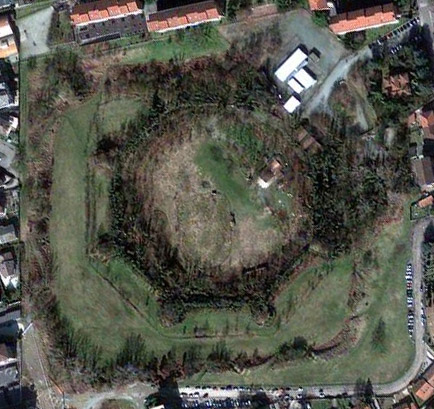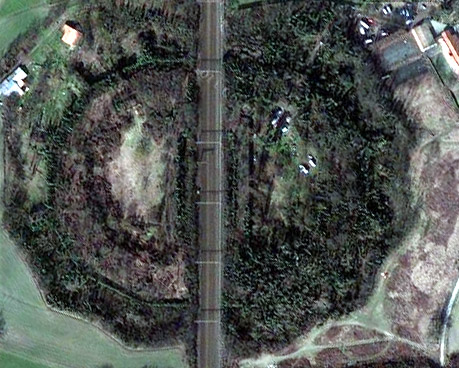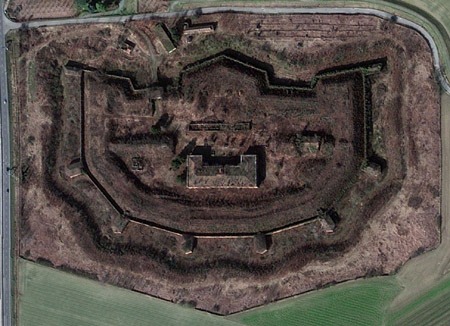 |
Citadel of Alessandria
Alessandria, Italy
|
|
 |
Constructed: 1749 - 1831
Used by: Savoy, France, Italy
Conflicts in which it participated:
French Revolutionary Wars
Second Italian War of Independence
|
The city of Alessandria sits at the confluence of the Tarano and Bormidia di Spigno rivers in northwestern Italy. Founded in 1168, it was sited strategically amidst a number of eternally warring city-states, and came into existence as a stronghold for the Lombard League, an alliance formed in 1167 to fight the Holy Roman Empire's attempts to exert influence in northern Italy.
France and Spain fought a series of wars over control of northern Italy, and Spain got the upper hand in this region, known as Savoy, sometime in the 16th century.
|
 |
|
|
From 1710 to 1714, most of Europe got involved in the War of the Spanish Succession, fought over precisely whom had the right to succeed the weirdly mutated Spanish King Charles II (1661-1700).
Charles was so very malformed, in fact, that he was unable to produce an heir (Charles was the end result of the Spanish Habsburgs effectually inbreeding themselves out of existence). What's a monarchy to do when there's no heir to take the throne? Spain at the end of the 17th century had a huge empire, thus there were many parties that were quite convinced the throne should be theirs: The Bourbons in France and Habsburgs in Austria were the two main contenders. Once France and Austria get interested in snapping up the Spanish Empire, pretty soon one has a world war on one's hands.
|
 Thank you, "Gio S." If that's really your name. Thank you, "Gio S." If that's really your name. |
 |
The Treaty of Utrecht (1713) laid out whom got what at the end of the War of the Spanish Succession (1701-1714). Alessandria and its environs were given to the House of Savoy, which was technically ruled by the king of Sardinia, who in this case was Victor Amadeus II (1666-1732). King Victor immediately set plans in motion to fortify the living hell out of Alessandria.
The first step in the construction of the Citadel of Alessandria was the razing of the city's ancient district, which had been growing prosperously on the north bank of the Tanaro River for 500 years. Forts are more important than houses, people!
In 1720, the project was handed to Italian military engineer Ingazio Bertola (1676-1755). Bertola, who held the "position" of Master of Fortresses, beavered away until 1726, when the fort's first iteration was proclaimed to be finished.
On June 14, 1800, Napoleon Bonaparte (1769-1821) led the French army against the Austrians, who had been massing in Alessandria, at the Battle of Marengo. The French clobbered the Austrians, which both ejected the latter from northern Italy and solidified Napoleon's position as Big Awesome Dude in France. |
|
The Glorious French Republic made Alessandria the capital city of their new Département of Marengo. In the 14 years that France was in Alessandria, they strengthened the Citadel of our current interest (giving the fort most of its current visage), plus built at least two more starforts to protect the city, the scant information about which I have found will be detailed below.
|
 |
|
|
Once the Congress of Vienna (September 1814 - June 1815) wrapped up the Napoleonic Wars and France left northern Italy, Alessandria returned to the Kingdom of Sardinia.
The Austrian Empire spent the first half of the 19th century occupying much of northern Italy. The Piedmontese (the folks of northern Italy) unsuccessfully tried to eject the Austrians in the First Italian War of Independence (1848-1849), but soon thereafter cleverly allied with French blowhard Napoleon III (1808-1873) for another try. During the resulting Second Italian War of Independence (1859), the Citadel of Alessandria may or may not have played a direct role: It seems to be remembered in a heroic light, but I can't find any reference to a siege or battle in which it participated. Regardless, Napoleon III spent some time at Alessandria during this conflict, and surely he went to the Citadel and did important things. The Italian/French alliance defeated the Austrians, which led to the declaration of a unified Italian kingdom in 1861.
A visitor to Alessandria in 2008 who attempted to visit the Citadel found the experience disappointing. The Italian military still owns the fort and operates there in some capacity, so the visitor was unable to get inside...but noted that, seeing in what poor condition the outside of the fort was, one probably wouldn't want to bother with the inside anyway.
|
|
 |
When the French were masters of Alessandria from 1800 to 1814, the city was the capital of their new pseudo-French state, the Département of Marengo. They obviously felt that their new Département would be needing plenty of defending from something, because they built at least two biddy little starforts on the south side of the city, which are today known as Forte Ferrovia and Forte Acqui.
I say "at least two forts" because, as one can plainly see, there is in fact a third little fort a wee bit to the east of Alessandria as well.
|
|
There is absolutely nothing online (that I can find, anyway!) about these three forts, save for a brief mention in Alessandria's Wikipedia page, and a smidge more on the city's Italian Wikipedia page. I know, shame on me for using Wikipedia as a primary source for anything, but it's frequently the only place one can find information on out-of-the-way starforts.
Forte Acqui and Forte Ferrovia were most certainly built by the French during their stay in Alessandria. Though their shape is by no means that of the classic starfort, they're semicircular forts with small bastions poking out at strategic intervals: Just the thing to dissuade all but the strongest of attacking forces.
|
 |
 Forte Acqui Forte Acqui |
|
 Forte Ferrovia Forte Ferrovia |
 |
Ferrovia is the Italian word for "railroad!" One can't imagine that the French, when building this fort circa 1805, sagely envisioned the glorious future of rail travel (the first mechanized rail-based transport system wouldn't appear until the 1820's, in England) and predicted that this fort would one day be split cruelly in two by railroad tracks serving the city of Alessandria...but maybe they did! Although they did not.
Honestly, the only place to lay tracks into the city was through the direct center of this desperately important historical structure?!
|
|
Forte Bormida, while sharing some architectural similarities with Alessandria's two other little fortlets, seems to have more in common with the chevron-shaped Artillery Forts that unfortunately came into vogue in the last half of the 19th century. One will also note that it is in much better condition than the other two Alessandrian miniforts.
The two things that make me think that Forte Bormida was not built late in the 19th century are the cute little bastions along the bottom curve of the fort that so closely resemble those on the two semicircular forts, and that there would have been no point in building a fort of such capability, oriented in the direction that it is and at the location that it is, once Italy was a unified kingdom.
|
 |
 Forte Bormida Forte Bormida |
|
I would like to note that this scant amount of information that I did find about these three small forts was discovered no thanks to the mayor of Alessandria, whose office I emailed some months ago, politely requesting information, but from which I received no reply. Thanks a load there, Mr. or Ms. Mayor of Alessandria.

A gentleman by the name of Alessandro Casoli has informed us that Alessandria's lil' extra forts, Aqui and Ferrovia, had nothing to do with the French occupation. They were built in the second half of the 19th century, when the Italian state of Piedmont, in which Alessandria resides, was part of the Kingdom of Sardinia. Which makes much more sense that a fort named Fort Railroad existing before there were such things as railroads.
Assumedly Forte Bormida would have been built by the same folks around the same time. While it's difficult to say precisely whom these forts were built to defend against, many European cities surrounded themselves with small artillery forts in the mid-to-late 19th century, to extend their defensive ring: A 17th century starfort is swell, but didn't project defensive power very far.
|
|
|
|
|
|
 |




